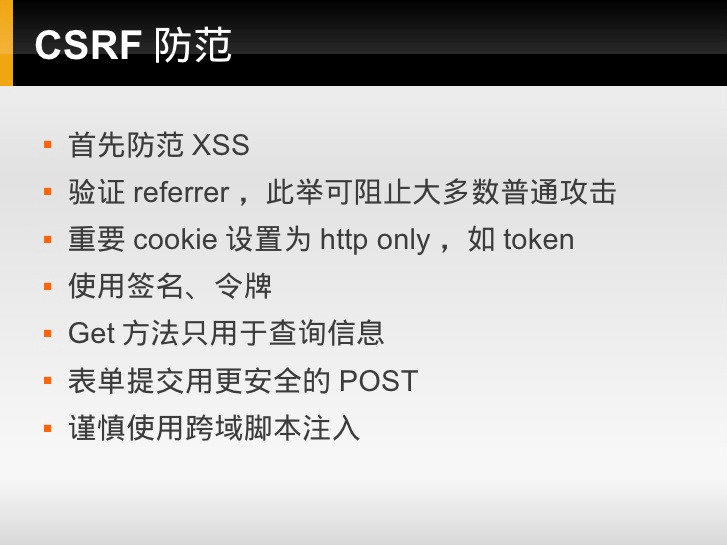Home >Backend Development >PHP Tutorial >Analysis on the method of adding Token to PHP form to prevent repeated submissions
Analysis on the method of adding Token to PHP form to prevent repeated submissions
- 高洛峰Original
- 2016-12-20 15:52:001126browse
The example in this article describes how to add Token to a php form to prevent repeated submissions. Share it with everyone for your reference, the details are as follows:
Token Talk
Token is a token, and its biggest feature is randomness and unpredictability. Normal hackers or software cannot guess it.
So, what is the function of Token? What is the principle?
Token is generally used in two places - to prevent repeated form submissions and anti-csrf attacks (cross-site request forgery).
Both are implemented in principle through session tokens. When the client requests a page, the server will generate a random number Token, place the Token in the session, and then send the Token to the client (usually by constructing a hidden form). The next time the client submits a request, the Token will be submitted to the server along with the form.
Then, if applied to "anti csrf attack", the server will verify the Token value to determine whether it is equal to the Token value in the session. If it is equal, it can be proved that the request is valid and not forged.
However, if it is used to "prevent repeated form submissions", after the first verification is the same on the server side, the Token value in the session will be updated. If the user submits repeatedly, the second verification judgment will fail because the user The Token in the submitted form has not changed, but the Token in the server-side session has changed.
The above session application is relatively safe, but it is also cumbersome. At the same time, when there are multiple pages and multiple requests, the method of generating multiple Tokens at the same time must be used, which takes up more resources and reduces the execution efficiency. Therefore, the method of storing verification information in cookies can also be used instead of session Token. For example, when dealing with "repeated submissions", the submitted information will be written to the cookie after the first submission. When submitted for the second time, since the cookie already has a submission record, the second submission will fail.
However, cookie storage has a fatal weakness. If the cookie is hijacked (XSS attacks can easily obtain user cookies), then there will be another gameover. Hackers will directly implement CSRF attacks.

So, safety and efficiency are relative. Let’s deal with specific issues in detail.
Token is added to the php form to prevent repeated submissions
The principle is to generate a random string and put it in the session. After submitting the form, this string is verified, which can prevent others from writing the form themselves to cheat the submission, repeated submission or double-click submission.

The simple code implemented in php is as follows:
<?php
/*
* PHP简单利用token防止表单重复提交
* 此处理方法纯粹是为了给初学者参考
*/
session_start();
function set_token() {
$_SESSION['token'] = md5(microtime(true));
}
function valid_token() {
$return = $_REQUEST['token'] === $_SESSION['token'] ? true : false;
set_token();
return $return;
}
//如果token为空则生成一个token
if(!isset($_SESSION['token']) || $_SESSION['token']=='') {
set_token();
}
if(isset($_POST['test'])){
if(!valid_token()){
echo "token error";
}else{
echo '成功提交,Value:'.$_POST['test'];
}
}
?>
<form method="post" action="">
<input type="hidden" name="token" value="<?php echo $_SESSION['token']?>">
<input type="text" name="test" value="Default">
<input type="submit" value="提交" />
</form>The above method is simpler, and the following code is more secure.
Token.php
<?php
/*
* Created on 2013-3-25
*
* To change the template for this generated file go to
* Window - Preferences - PHPeclipse - PHP - Code Templates
*/
function getToken($len = 32, $md5 = true) {
# Seed random number generator
# Only needed for PHP versions prior to 4.2
mt_srand((double) microtime() * 1000000);
# Array of characters, adjust as desired
$chars = array (
'Q',
'@',
'8',
'y',
'%',
'^',
'5',
'Z',
'(',
'G',
'_',
'O',
'`',
'S',
'-',
'N',
'<',
'D',
'{',
'}',
'[',
']',
'h',
';',
'W',
'.',
'/',
'|',
':',
'1',
'E',
'L',
'4',
'&',
'6',
'7',
'#',
'9',
'a',
'A',
'b',
'B',
'~',
'C',
'd',
'>',
'e',
'2',
'f',
'P',
'g',
')',
'?',
'H',
'i',
'X',
'U',
'J',
'k',
'r',
'l',
'3',
't',
'M',
'n',
'=',
'o',
'+',
'p',
'F',
'q',
'!',
'K',
'R',
's',
'c',
'm',
'T',
'v',
'j',
'u',
'V',
'w',
',',
'x',
'I',
'$',
'Y',
'z',
'*'
);
# Array indice friendly number of chars;
$numChars = count($chars) - 1;
$token = '';
# Create random token at the specified length
for ($i = 0; $i < $len; $i++)
$token .= $chars[mt_rand(0, $numChars)];
# Should token be run through md5?
if ($md5) {
# Number of 32 char chunks
$chunks = ceil(strlen($token) / 32);
$md5token = '';
# Run each chunk through md5
for ($i = 1; $i <= $chunks; $i++)
$md5token .= md5(substr($token, $i * 32 - 32, 32));
# Trim the token
$token = substr($md5token, 0, $len);
}
return $token;
}
?>form.php
<?php
include_once("token.php");
$token = getToken();
session_start();
$_SESSION['token'] = $token;
?>
<form action="action.php" method="post"
<input type="hidden" name="token" value="<?=$token?>" />
<!-- 其他input submit之类的 -->
</form>action.php
<?php
session_start();
if($_POST['token'] == $_SESSION['token']){
unset($_SESSION['token']);
echo "这是一个正常的提交请求";
}else{
echo "这是一个非法的提交请求";
}
?>I hope this article will be helpful to everyone in PHP programming.
For more analysis on how to add Token to PHP forms to prevent repeated submissions, please pay attention to the PHP Chinese website!

